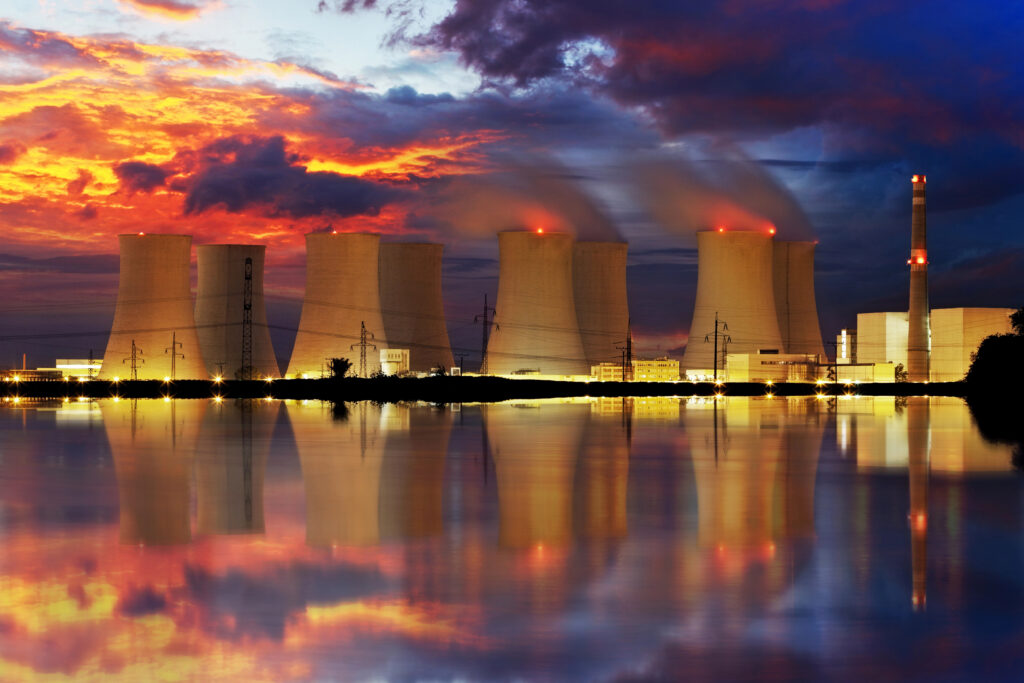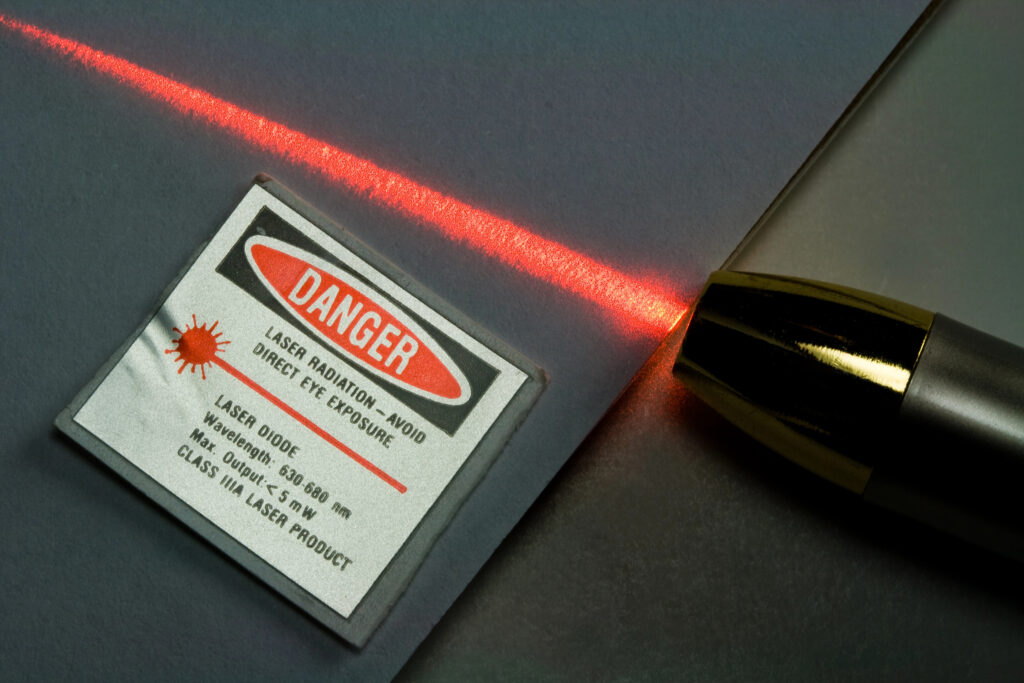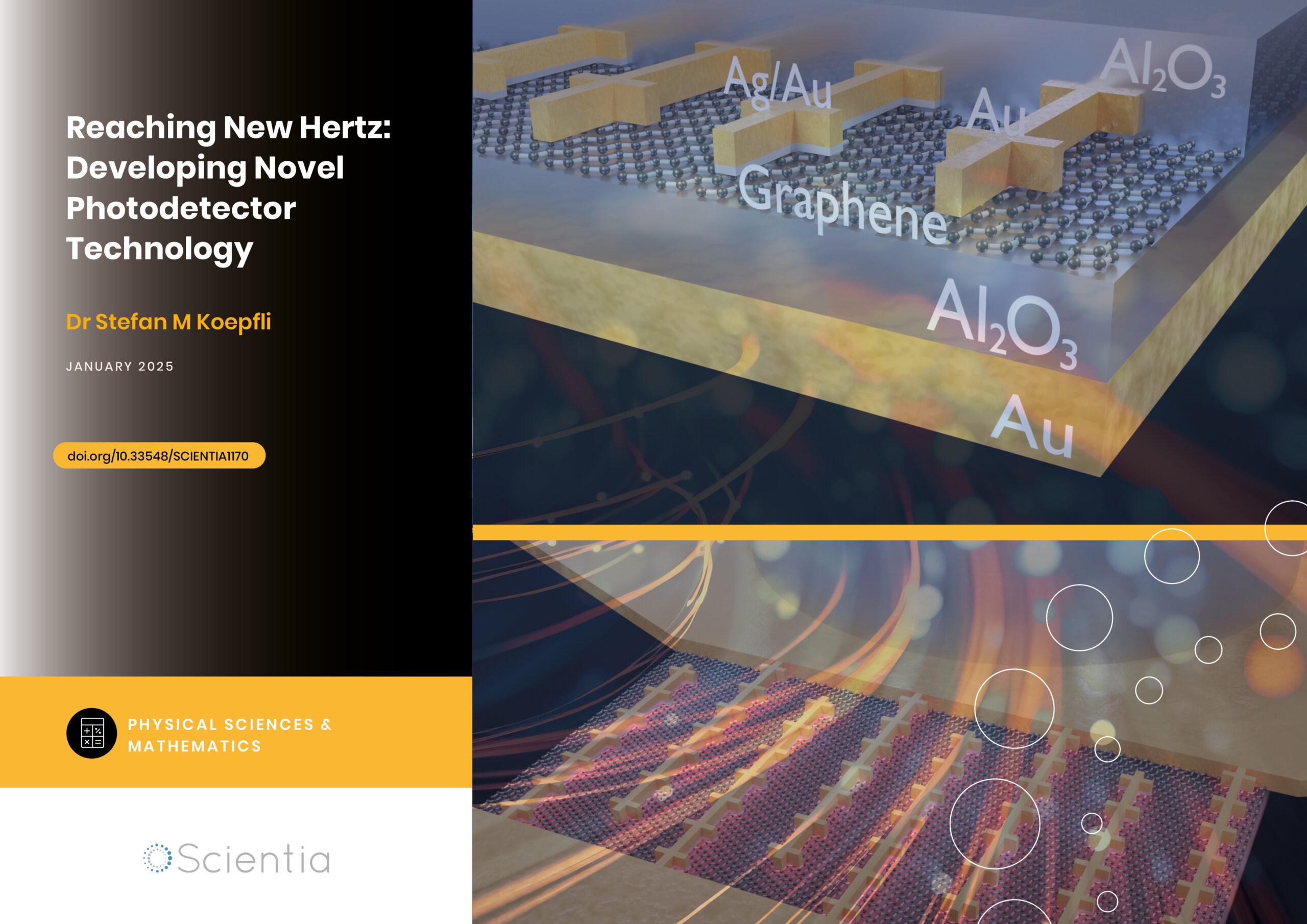Dr Christopher Singh | Navigating Radiation Challenges for Photonic Devices
Dr Christopher Singh at the Los Alamos National Laboratory in the USA conducts groundbreaking research into photonic devices. We find out here about the potential impacts of his work exploring quantum physics in radiation-heavy environments. His work informs progress across excitingly diverse sectors, including space exploration, nuclear energy, and healthcare.
Understanding and Improving Photonic Devices
In modern science, the study of photonic devices in radiation environments plays an increasingly important role in several real-world applications. This field explores how light-based technologies, or photonics, behave under the influence of radiation, a condition prevalent in space, nuclear reactors, and certain medical equipment. The significance of this research lies in its potential to revolutionise how we protect and enhance technology in high-radiation settings, obtaining precise measurements while keeping the equipment intact.
By understanding and improving the resilience of photonic devices, Dr Christopher Singh at the Los Alamos National Laboratory in the USA aims to advance numerous applications, from safer nuclear energy production to more reliable space exploration equipment. His work not only contributes to our scientific knowledge but also paves the way for technological innovations that could shape our future.
For instance, Dr Singh investigated the development of radiation-resistant fibre optics for enhancing safety in nuclear reactors. These sensors could provide accurate, real-time monitoring of radiation levels, which is crucial for preventing accidents. The team’s work on photonic devices in space environments is also pivotal for satellite communications. Their research into how these devices withstand cosmic radiation could drive the development of more reliable and durable communication systems in space missions.
In specialising in the study of photonic devices under radiation exposure, detailed analyses of radiation effects on semiconductor lasers and optical fibres are conducted with the hope of improving their functionality and durability in harsh environments. This research is essential for advancing technologies in areas like space exploration and nuclear safety, where robust and reliable photonic systems are critical.
Silica fibres and Gamma Rays
A recent paper published in Materials Today Communications explores the impact of gamma-ray radiation on the attenuation of optical signals in wet fused silica fibres, commonly used in telecommunications. The team used advanced modelling techniques, including molecular dynamics and density functional theory, to identify non-bridging oxygen-hole centres as the primary microscopic defect responsible for radiation-induced attenuation in the visible range. They discovered that radiation creates specific defects in these fibres, leading to signal loss. This finding is crucial for improving the design of optical fibres in environments like space, where radiation levels are high and reliable communication is essential.
Beyond telecommunications, these insights into gamma-ray-induced defects in silica fibres could significantly impact the development of radiation-hardened materials in various high-stake fields. For instance, in medical imaging technology, where precise and reliable transmission of optical signals is crucial, enhancing fibre resilience could lead to more accurate diagnostics. Additionally, in aerospace engineering, these advancements could improve the reliability of spacecraft communication systems, crucial for deep-space missions facing intense cosmic radiation.

Radiation and Semiconductor Lasers
In another recent paper, Dr Singh’s team addressed a critical aspect of semiconductor laser technology. Through a first-principles-based analysis of quantum effects, they reveal that radiation significantly disrupts the internal processes of these lasers, particularly impacting bright excitons, which are essential for their operation. This disorder manifests as a decrease in the radiative lifetime of excitons, leading to reduced efficiency and performance.
The team’s approach is innovative, employing a first-principles many-body approach to address the quantum effects and interactions in radiation-damaged laser gain media. They found that radiation-induced changes in the electronic structure affect the radiative recombination efficiency by localising exciton wave functions at the band edges, a critical insight for the design of more resilient photonic devices in high-radiation environments like space exploration and nuclear facilities. To put it simply, the team’s research indicates that radiation exposure can compromise the effectiveness of lasers, some of which are often used in high-risk environments, such as space or nuclear reactors, again highlighting a need for improvement and research to make these systems more resilient and safer.
Diving into the World of Gallium Arsenide
Dr Singh and his team took a deep dive into the world of gallium arsenide (GaAs), a material pivotal in optoelectronics. They explored how radiation introduces defects that alter GaAs’s thermal carrier decay processes — a key factor affecting the performance of devices like solar cells and laser diodes. This study not only sheds light on the fundamental behaviour of electrons and holes in irradiated GaAs but also sets the stage for designing more robust optoelectronic devices. They delve into how quantum interactions at the atomic level, particularly the behaviour of electrons and holes, are altered by radiation. This alteration affects how efficiently these electrons and holes recombine, a process central to the functioning of devices like solar cells and lasers.
Understanding these quantum-level changes is crucial for developing GaAs-based devices that can sustain their performance in radiation-intense environments, bridging the gap between quantum phenomena and real-world technological resilience.
Interplay with Chemistry
Dr Singh and his team undertook a comprehensive study on luminescent materials, specifically focusing on rare-earth aluminate scintillators. Scintillators, made from rare-earth aluminate, are pivotal in radiation detection: the team’s breakthrough lies in their innovative approach to predicting how these materials behave at a quantum level, particularly focusing on the dance between electrons and holes.
The researchers explored the influence of electron-hole correlation on the optical properties of these materials. In physics, an ‘electron-hole’ pair refers to the combination of an electron and the absence of an electron (called a ‘hole’) in a semiconductor material. When an electron gets enough energy, it can jump out of its usual position in an atom, leaving behind a hole which behaves like a positively charged particle. Enhanced scintillators could lead to more accurate PET scans in healthcare, aiding in early diagnosis and effective treatment planning. Similarly, in security, improved scintillators could improve the sensitivity of radiation detection systems for monitoring and controlling nuclear materials. Moreover, an improved understanding of scintillators could enhance medical imaging technologies such as PET scans, providing clearer images for more accurate diagnoses, and also improving the reliability and precision of fibre-optic tools used in minimally invasive surgeries and diagnostics. Due to its importance and numerous potential applications, Dr Singh’s research was featured by the Royal Society of Chemistry.

Importance and Implications of First-Principles Research
The application of first-principles research, leveraging quantum effects to gauge their impact on technology, is pivotal in sectors like nuclear, space, and healthcare, where radiation plays a significant role. This holistic approach is essential for enhancing the precision and reliability of technologies in these crucial areas. It leads to innovations in photonic devices and semiconductor lasers, ensuring they withstand and function efficiently in high-radiation environments. Such advancements underscore the importance of integrating quantum physics with real-world technological challenges, paving the way for safer, more effective solutions across these critical sectors.
These effects are relevant in any real-world setting where substantial radiation is present. In space, radiation is a critical factor due to the intense exposure to cosmic rays and solar radiation. This exposure can degrade materials, interfere with electronic systems, and pose significant health risks to astronauts. Spacecraft and satellites must be equipped with materials and technologies capable of withstanding this harsh radiation environment to ensure their longevity and functionality, and communication systems and instruments for space exploration missions must be reliable. Failure due to radiation damage can have significant consequences, but more subtle effects, such as degradation or lowered precision, may also be present, and it is important to fully understand their extent to mitigate their impact.
Similarly, in the nuclear sector, managing radiation is an essential component of safety and efficiency. Nuclear reactors produce significant amounts of radiation, requiring materials and technologies that can withstand this exposure while maintaining integrity and functionality. Radiation control is also essential for monitoring and managing the reactor’s core and for safely handling and storing spent nuclear fuel. Nuclear power, as a low-carbon energy source, plays a crucial role in addressing climate change challenges, and safety is the first concern that often prevents its implementation. Effective radiation control and material resilience in nuclear reactors that ensure the safe and efficient production of this cleaner energy would increase its adoption rates, enabling it to play a pivotal role in net zero carbon goals.
Finally, in healthcare, radiation plays a fundamental role, particularly in diagnostic imaging and cancer treatment. Technologies like X-rays, CT scans, and radiation therapy rely on controlled radiation to diagnose and treat various medical conditions effectively. Precise and safe use of radiation in these applications is crucial for patient health, and for the accuracy of scans. Advancements in understanding radiation effects on equipment and materials can lead to more accurate diagnostics and targeted treatments, enhancing patient care and outcomes, and lowering costs.
Dr Singh’s research, bridging quantum physics and practical applications, marks a significant stride in our understanding of radiation’s impact on photonic devices. His contributions not only advance our scientific knowledge but also lay the groundwork for safer, more effective solutions in areas where radiation management is crucial.
SHARE
DOWNLOAD E-BOOK
REFERENCE
https://doi.org/10.33548/SCIENTIA1093
MEET THE RESEARCHER

Dr Christopher Singh
Los Alamos National Laboratory
Los Alamos, NM
USA
Dr Christopher Singh, a dynamic researcher in theoretical condensed matter physics, combines high-performance electronic structure simulations, machine learning methods, and many-particle physics to explore quantum processes for next-generation applications. His academic journey includes a PhD in Physics from Binghamton University, titled ‘Quantum Artificial Intelligence: Leveraging microscopic transport phenomena for beyond von Neumann computing’. He is a staff scientist at Los Alamos National Laboratory, where he continues pushing the boundaries of material science and quantum physics.
CONTACT
E: christopher.n.singh@gmail.com
LinkedIn: https://www.linkedin.com/in/csingh5binghamton
FURTHER READING
CN Singh, BP Uberuaga, SJ Tobin, XY Liu, Impact of radiation-induced point defects on thermal carrier decay processes in GaAs, Acta Materialia, 2023, 242, 118480. DOI: https://doi.org/10.1016/j.actamat.2022.118480
GJ Paez, CN Singh, MJ Wahila, et al., Simultaneous Structural and Electronic Transitions in Epitaxial VO2/TiO2(001), Physical Review Letters, 2020, 124, 196402. DOI: https://doi.org/10.1103/PhysRevLett.124.196402

REPUBLISH OUR ARTICLES
We encourage all formats of sharing and republishing of our articles. Whether you want to host on your website, publication or blog, we welcome this. Find out more
Creative Commons Licence (CC BY 4.0)
This work is licensed under a Creative Commons Attribution 4.0 International License. 
What does this mean?
Share: You can copy and redistribute the material in any medium or format
Adapt: You can change, and build upon the material for any purpose, even commercially.
Credit: You must give appropriate credit, provide a link to the license, and indicate if changes were made.
SUBSCRIBE NOW
Follow Us
MORE ARTICLES YOU MAY LIKE
Renewable Fuel for a Generation of Green Batteries
Revolutionizing energy production has been integral to combatting climate change and reducing our dependence on limited natural resources, but complementary advances in energy storage have been lacking. Dr Thomas Guarr and Dr David Hickey from Michigan State University lead their team in investigating a counterintuitive molecular mechanism which could support a wave of green, renewable, and cheap batteries. If practical, this technology might be the crucial leap towards an entirely green energy system.
Deok-Young Lee – Dr Sin Hyuk Yim | Navigating the Quantum Frontier with Atom Spin Gyroscope Technology
Deok-Young Lee from the Korea Advanced Institute of Science and Technology and collaborator Dr Sin Hyuk Yim, affiliated with South Korea’s Agency for Defense Development work together to lead the advancement of quantum sensing technology. Their innovative research in developing rubidium-xenon gas cells has improved the precision and efficiency of atom spin gyroscopes, significantly driving forward the field of quantum measurement.
Revolutionary Battery Technology Promises to Transform Energy Storage
The world of energy storage is on the cusp of a significant breakthrough. As society increasingly shifts towards electrification, from personal devices to transportation and beyond, the limitations of current battery technology have become increasingly apparent. An innovative company in Tallahassee, Florida, is developing a revolutionary new battery that could transform how we store and use energy. The technology, developed by a team of experts at Piersica Inc., promises to deliver an energy density of 630 watt-hours per kilogram (Wh/kg)—approximately two and a half times higher than current lithium-ion batteries. This advancement will extend the range of electric vehicles, enable long-distance electric aircraft, and dramatically increase the battery life of portable electronics.
Dr Stefan Koepfli | Reaching New Hertz: Developing Novel Photodetector Technology
Photodetectors, or sensors which detect light and send information about the light via an electronic signal, are an essential piece of technology in modern optical science. Dr Stefan Koepfli from the Institute of Electromagnetic Fields, ETH Zurich in Switzerland, works with colleagues on the development and creation of these detectors. They look at how materials such as graphene can be used in these devices to improve the range of wavelengths that they can detect and also the speed at which they can transfer information.





